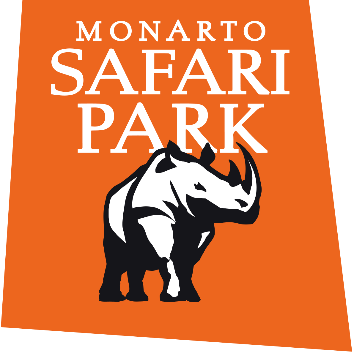| Keepers at Monarto Safari Park are being kept on their toes as a flurry of new animals has been born at the safari park.
This week has seen the Carnivore team welcome the birth of twin Spotted Hyaena cubs, born to mum Forest.
“When we arrived at work on Tuesday morning Forest was not visible in her yard,” said keeper Kat Ferres. “We checked the den camera and could see that she had given birth to twins overnight and that all was looking good.
“Since Tuesday,13-year-old Forest has been spending the majority of the time in her den just as she would in the wild. Forest has been doing a great job looking after her cubs – we have seen the cubs suckling and we’ve also seen her bring out the cubs to introduce them to Dad, Gamba,” said Kat.
In the wild, Spotted Hyaenas use dirt burrows where the cubs dig down into burrows so small that adults can’t get to them – they only come out when they hear mum calling. The small den at Monarto Safari Park mimics this natural habitat and behaviour.
The Spotted Hyaena is found in most African habitats, with an estimated global population of between 27,000 and 47,000. These carnivores live and adapt to a variety of habitats from open grasslands, dry semi-desert, forest areas and the acacia bush.
Hyaenas are a misunderstood species, often portrayed simply as daft scavengers. In reality, they’re very intelligent and are excellent hunters with a success rate of up to 95%,
Hyaenas live in complex matriarchal family structures called a clan which can grow to include up to 80 individuals.
Elsewhere in the Safari Park, there are eight more hooves tottering around. First, a zippy little male zebra foal was born on 16 October to mum Thembela and dad Storm. The calf is currently residing with the dazzle in an off limits area of the park and will move to the park’s Wild Africa area at some point in the future.
“The little zebra foal is very lively,” said Kat. “He likes to run around and also enjoys a good roll in the grass.”
There are approximately 150,000 – 200,000 wild Plains Zebras living on the African savannah plains. The species are currently listed as near-threatened by the International Union of the Conservation of Nature, with numbers decreasing due to hunting for their meat and skins.
Finally, on Wednesday, a giraffe calf was born to 20-year-old mum Myeisha. The calf, as yet unsexed, was born at the Waterhole exhibit. Staff will closely monitor mum and calf over the next few days to make sure that all is well.
Giraffes are vulnerable to extinction with an estimated 80,000 giraffe roaming the savannah plains of Africa, Their plight and struggle for survival is relatively unknown hence it is often referred to as the ‘Silent Extinction’. The number of giraffes is declining as their habitats shrink due to human population growth and an increase in agricultural activity, expanding settlements and road construction. The giraffe’s main food source, acacia trees, is also on the decline.
Members and visitors to Monarto Safari Park are kindly asked to book tickets online at www.monartosafari.com/tickets |








